Dating from the 14th century, the timber-framed manor house in Herefordshire is surrounded by a moat and a unique-looking timber-framed gatehouse at the entrance. There are 1,000 acres to explore at Brockhampton, which has been owned by the National Trust since 1946. The site was also the location of the medieval village of Studmarsh, and a 2012 dig found a couple of foundations of buildings that may have made up part of the village.
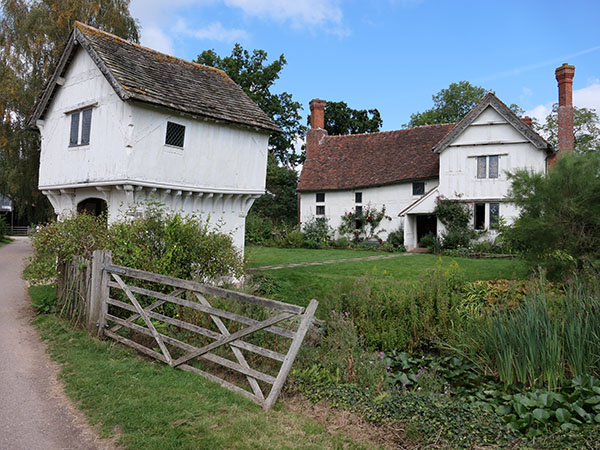
A small orchard is located on the way to the manor house, and I found some ripe plums.
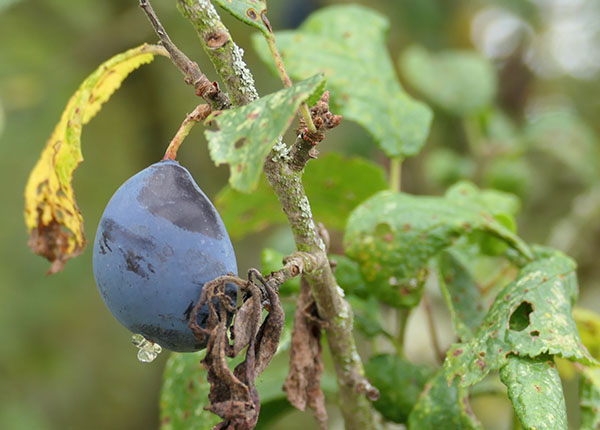
First, I went to the cafe to have a scone and tea before making my way to explore the house.
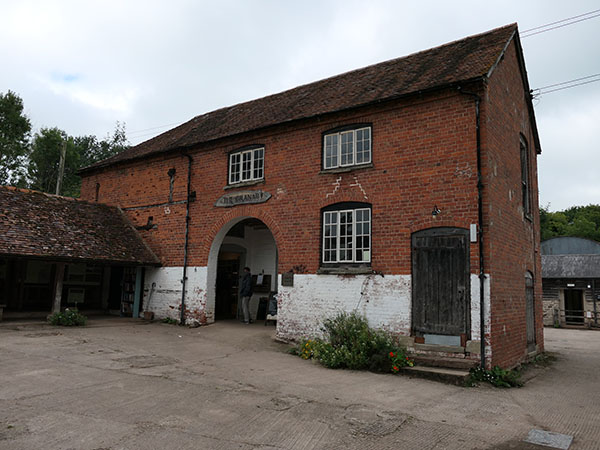
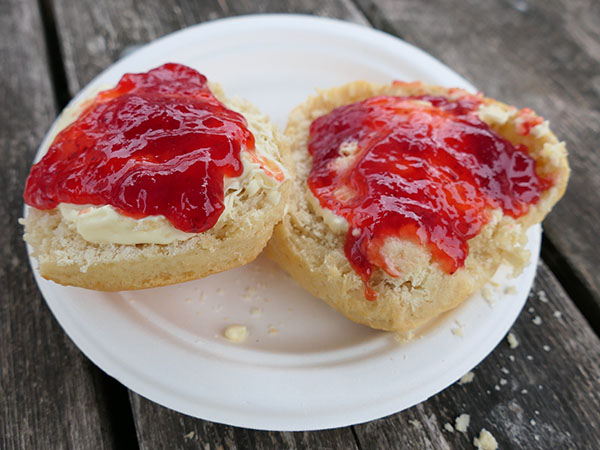
The gatehouse was built in the mid-1500s, roughly a century after the house. It was built to display wealth of the owners. Since then, it has been used to store animal traps, dog food, and was even a henhouse.
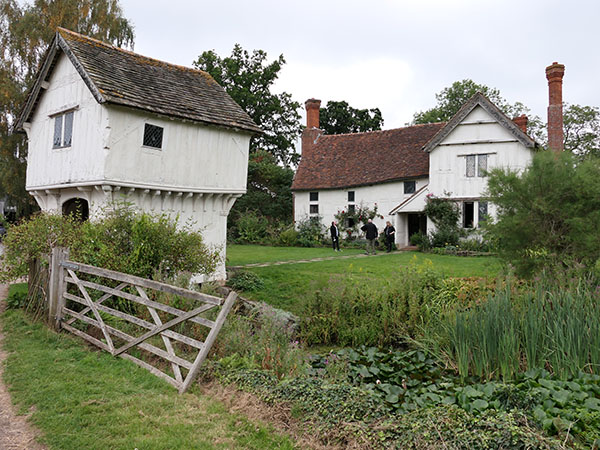
There isn't a clear indication of when the house itself was built, but it was documented in 1166. The current house seems to date from the early 1400s. There is a church outside the moat, which is now a ruin, and it dates from the 13th century. The area is thought to have been occupied much earlier.
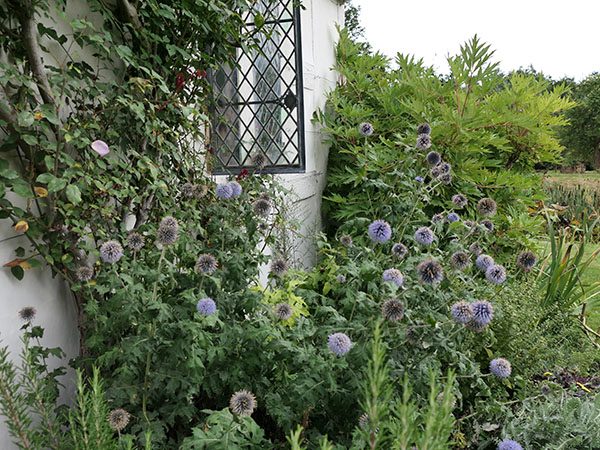
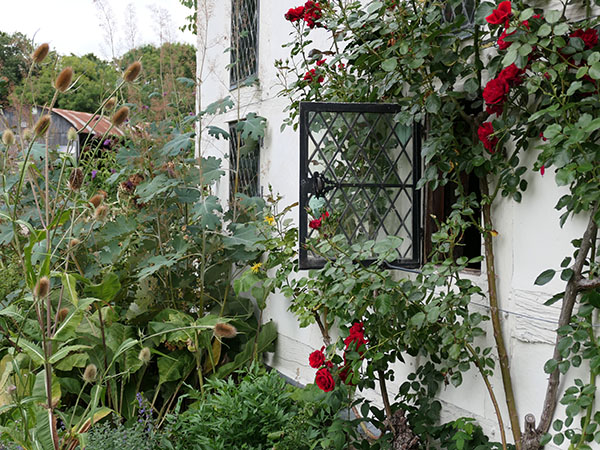
The first room on the right side of the entrance hall is the Gentleman's study. It was designed to look lived in during the 1930s by the last owner, who worked in the military in Boer War and World War I. He gave the house to the National Trust since he was a bachelor and did not have a family to pass it on to.
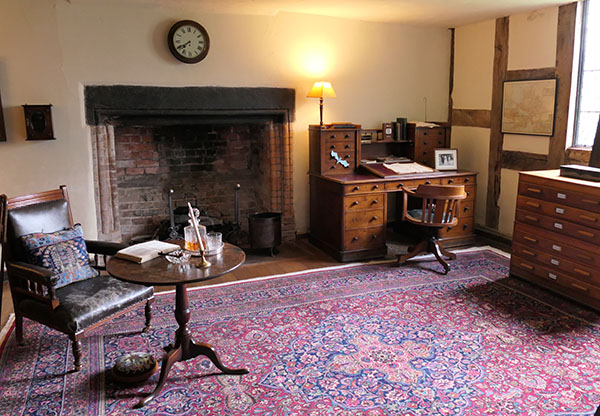
In mid-1500s, the house was lived in by John Habington, who worked for Elizabeth I. After travels to europe, he converted to Catholicism and organised a plot to rescue Mary Queen of Scots and overthrow Elizabeth I. He was imprisoned for treason and his brother Edward was executed for their part. John was later involved in hiding priests and was part of the Gunpowder Plot, but survived execution again.
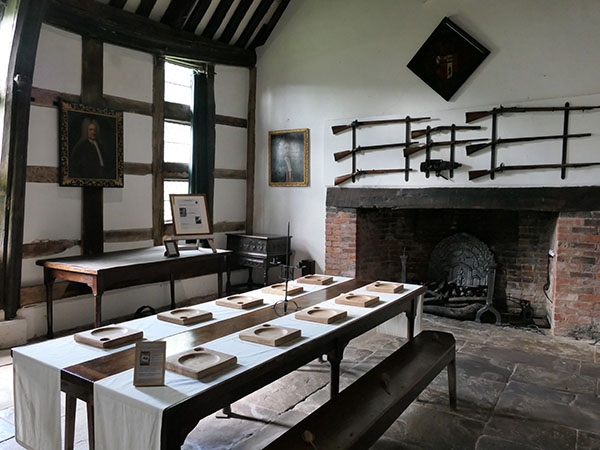
The Great Hall is a massive building to the left of the entrance hall. in the 1600s a floor was put above the Great Hall to create more bedrooms. The floor was removed in the later 1800s to bring back the original history of the house.
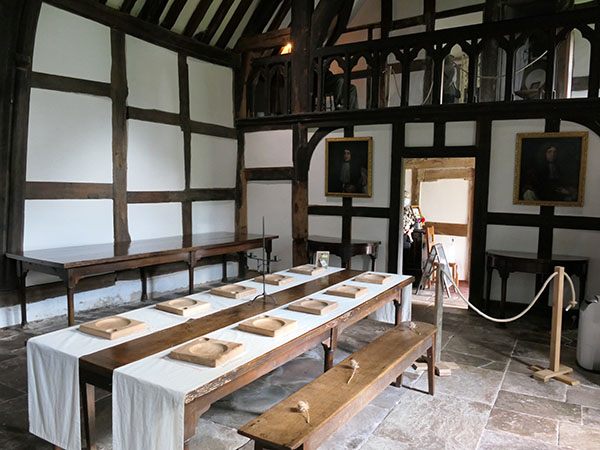
In 2020, the Habington hatchment (above the fireplace in photograph) fell mysteriously. It was discovered that bat urine was eroding some items, so the volunteers at Brockhampton need to wipe the surfaces down daily. The bats roost in the house during the day and fly around at night.
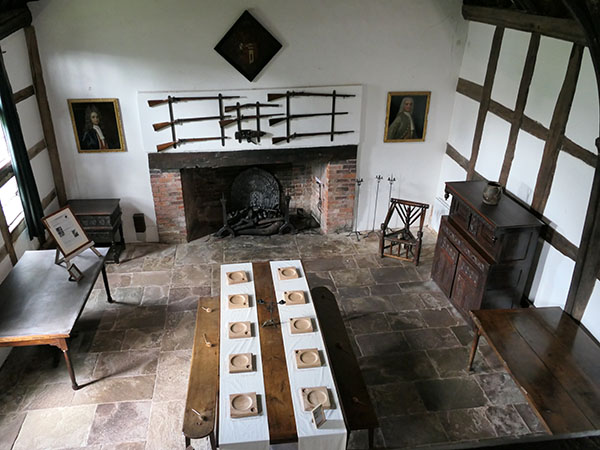
The bedroom below is known as the Isabella Barneby bedroom. In the 1680s, she married the man who inherited the Brockhampton estate. The four-poster bed was made in the mid-1600s from English oak.

The house was occupied by farm workers from the mid-1700s.
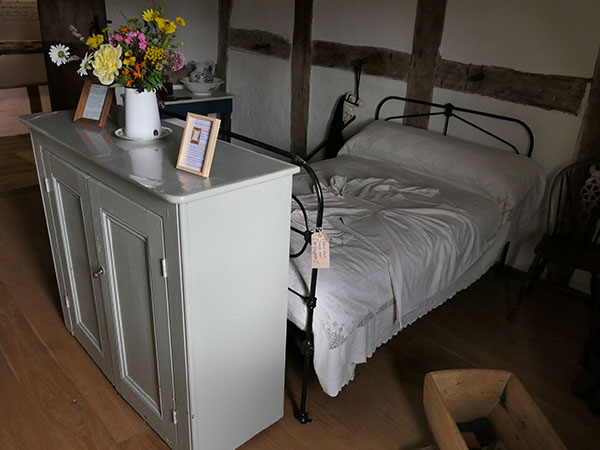
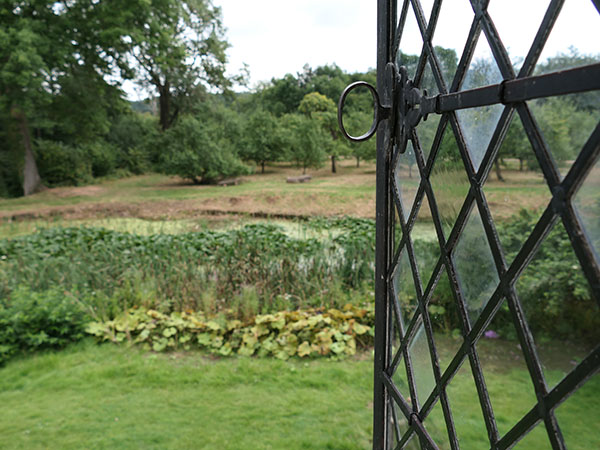

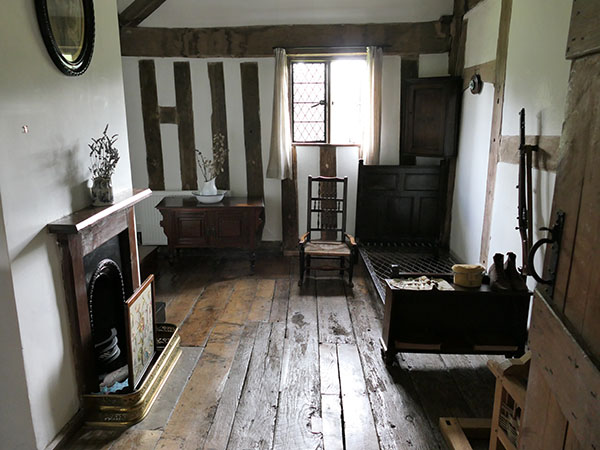
Back downstairs is Alice's kitchen, the wife of one of the farm workers. She catered for shooting parties, which were held in the Great Hall.
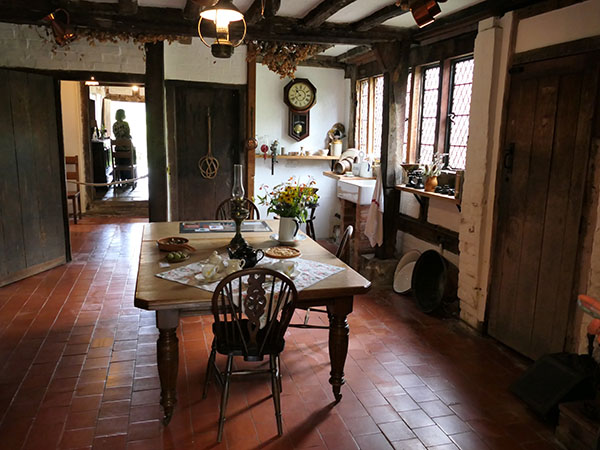
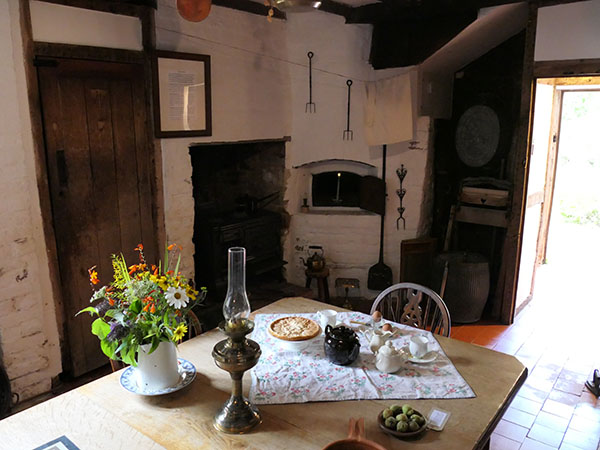
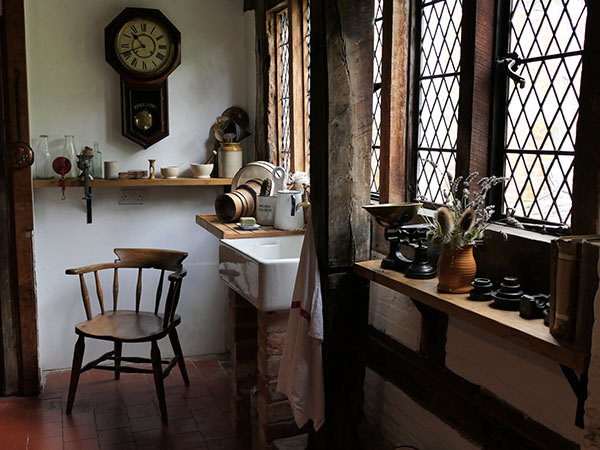
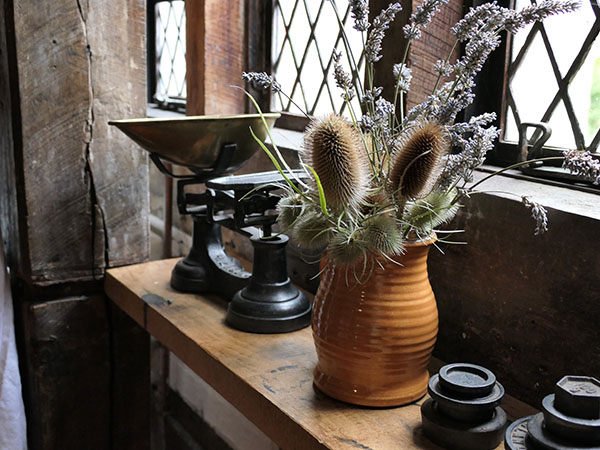
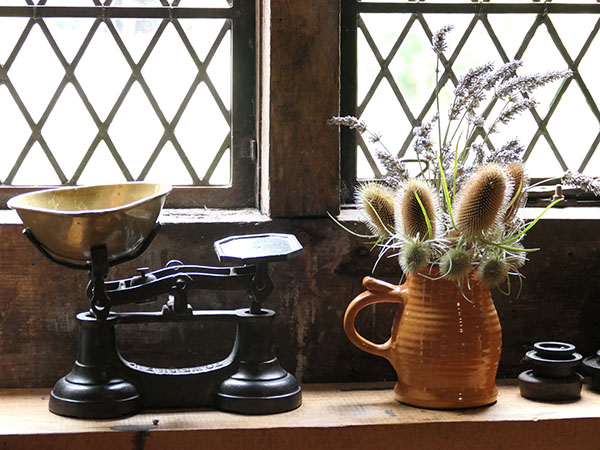
The final room off the kitchen on the ground floor is a lounge set up as it would have been in 1952 for use by tenant farmers. Children toys, books, a type writer and desk are displayed as being a part of family life of a tenant farmer family.
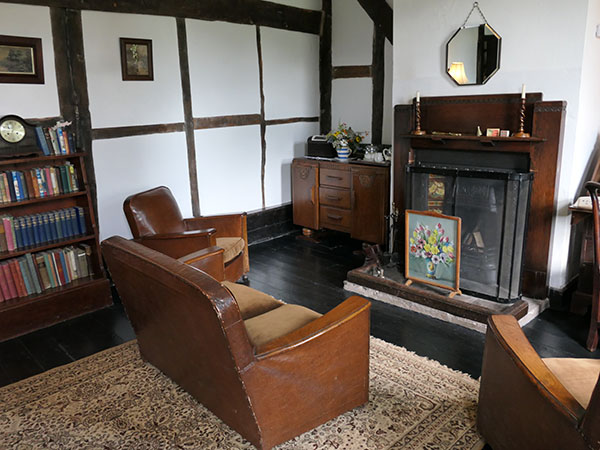
Some of the house was locked down, so we could not see all of the rooms. There appeared to be some information about cider and mead in a room off of the kitchen.
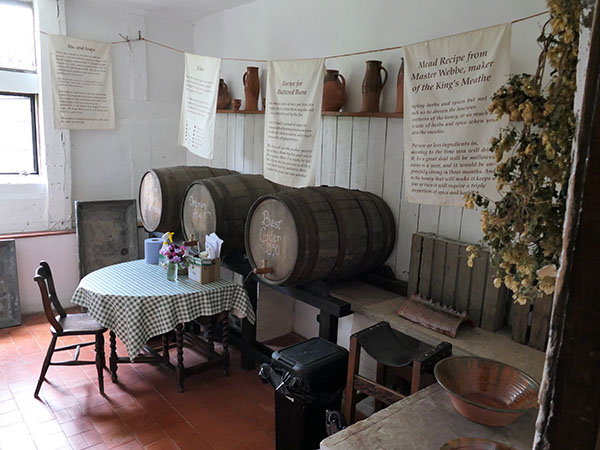
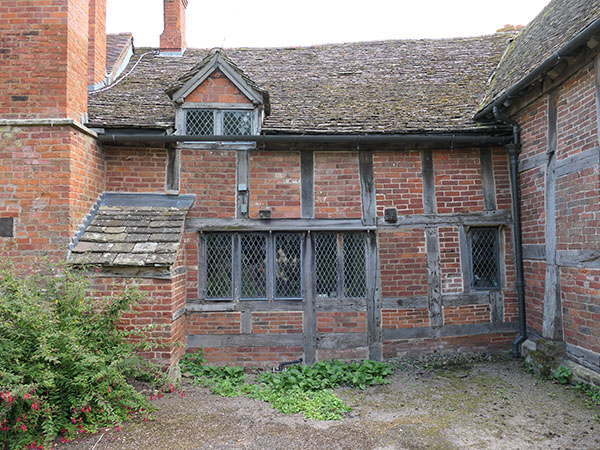
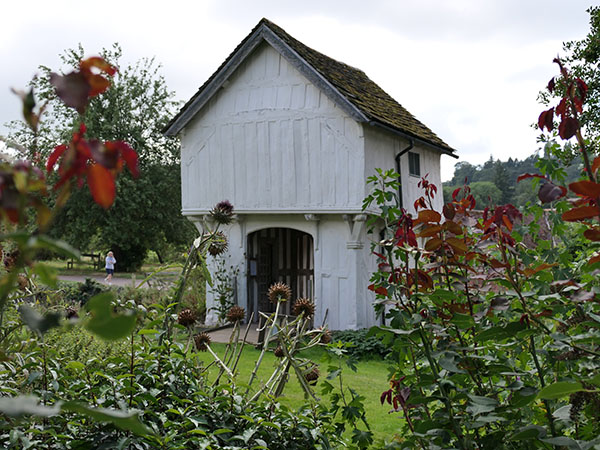
The chapel is documented from 1283, but it is thought to be built around 1166. A timber building probably existed before the stone structure, and there is evidence that the exterior walls were white-washed. Unfortunately, it is ruins today.
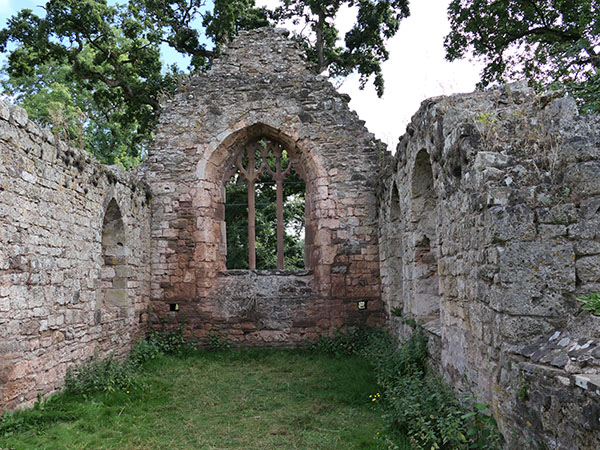
The farm buildings contain some information about farming and a fire engine.
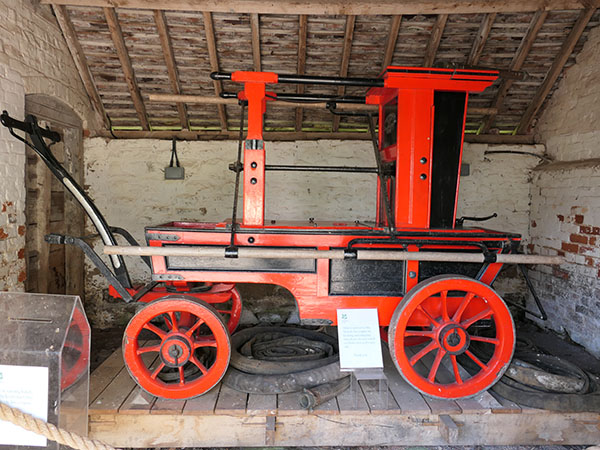
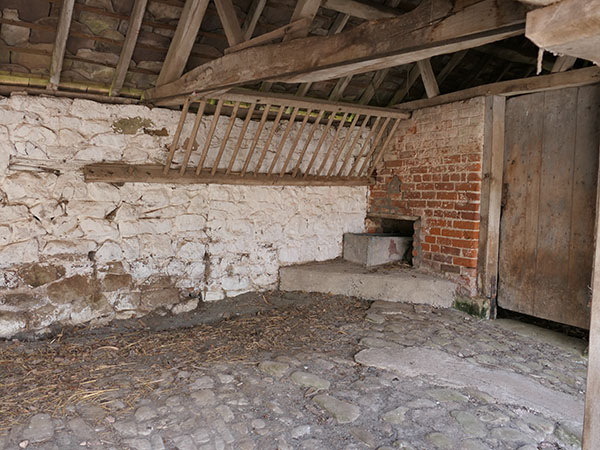
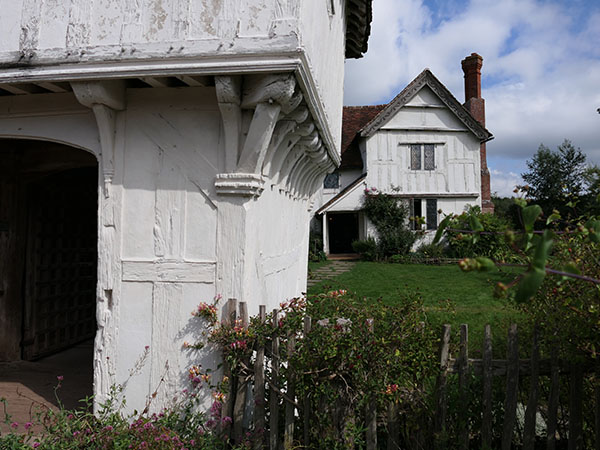
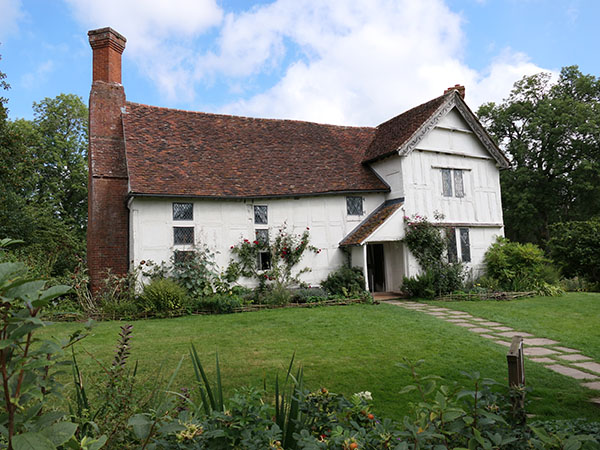
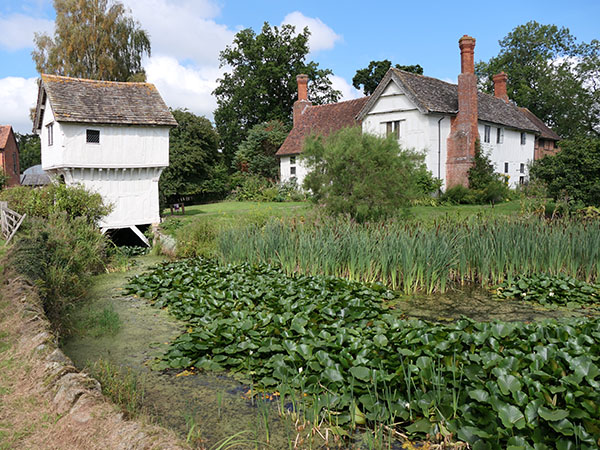
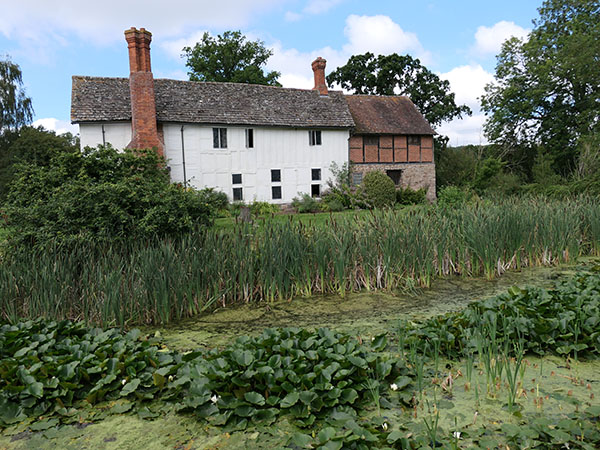
Brockhampton is a picturesque place. The moat, gatehouse, and the timber-framed buildings make a nice setting to enjoy, and it is easy to feel as though you have gone "back in time" in this setting.
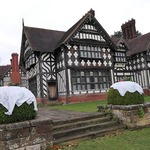

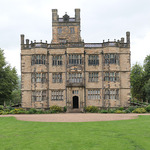
Leave a comment